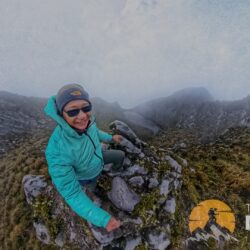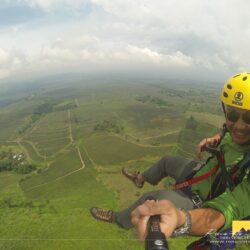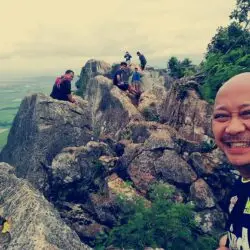“A picture is worth a thousand words—but sometimes, it’s also worth a thousand moments of peace.”
Introduction: Photography as a Path to Peace
“I’m not a photographer. I can’t even take a decent photo with my phone. Could I possibly take photos that offer moments of peace?”
Absolutely.
You don’t need a DSLR or formal training. What you need is intention. Photography can be a tool for mindfulness, self-expression, and emotional healing—and it plays a significant role in one’s overall wellness.
As a hobby photographer, outdoorsman, and orthopedic surgeon, I’ve explored this intersection for over 15 years. Let’s reflect on photography’s impact on mental, emotional, and social well-being.
Is There a Connection Between Wellness and Photography?
Understanding Wellness
According to the World Health Organization, wellness is a holistic state encompassing physical, mental, and social well-being (WHO, 2022). Creative expression—what many of us label as “hobbies”—is crucial for maintaining that balance.
For me, photography is creative therapy. It recharges me after long hours in high-pressure clinical settings. That’s wellness in practice.
Photography as a Therapeutic Medium
Photography combines creativity and mindfulness (Gibson et al., 2018). It helps you focus on what’s right in front of you: textures, light, color, composition. For many, this immersion offers a way to stay grounded in the present.
Consider landscape photographers. We spend hours observing the subtle changes of light at sunrise or sunset, often for just 8–10 minutes of golden window. That’s deep mindfulness in action.
Even in clinical settings, phototherapy (Weiser, 2016) uses images for emotional healing. Photos become tools to access memory, emotion, and identity.
What Are the Psychological Benefits of Photography?
Mindfulness and Flow
Over the years, I’ve noticed how deeply photography pulls me into the moment. My friends say I become “deaf” and “snobbish” when shooting. I’ve even risked my safety (almost hit by a truck!) during a roadside long exposure. That’s not advisable, but it shows how absorbing the process can be.
Emotional Expression
Photos are powerful tools for storytelling—especially for emotions we can’t quite verbalize. For me, photography is often a form of visual self-talk. It helps me express joy, awe, and even fatigue.
Enhancing Memory
Photography also sharpens memory and perception. According to Henkel (2014), taking photos can enhance memory retention—especially when done intentionally. For me, directing a model’s angle or capturing a landmark helps cement the moment in my mind.
How Does Photography Foster Social and Community Wellness?
Building Connections
Photography is a social language. Whether it’s your running group, health advocacy circles, or family albums—photos create shared spaces.
Communities like #EverydayAfrica or hobby groups on Facebook thrive on this dynamic. Photography fosters engagement and storytelling (Chalfen, 2020).
Cultural Awareness and Empowerment
Photography is also a window into culture. In documenting indigenous communities, I’ve learned to appreciate—and respect—traditions I wasn’t born into.
Participatory photo projects (like photowalks and contests) raise awareness about social issues and amplify unheard voices (Wang & Burris, 1997).
Nature, Photography, and Ecotherapy
Pairing photography with nature immersion (like forest bathing or Shinrin-Yoku) deepens its calming effects (Bratman et al., 2019). Observing the play of sunlight on leaves or the rhythm of waves engages multiple senses—lowering stress and boosting well-being.
Practical Tips for Using Photography to Support Wellness
Daily Mindful Practice
- Start a one-photo-a-day habit.
- Create a gratitude photo journal.
- Document moments that make you pause.
Self-Care and Therapy
- Try photovoice, a therapeutic technique combining images and narrative.
- Join art therapy programs that incorporate photography.
Community and Shared Meaning
- Participate in group challenges or photo prompts.
- Join community storytelling initiatives like The Everyday Project.
Conclusion: Capture Wellness in Every Frame
Photography isn’t just an art—it’s a practice of presence. A tool for clarity. A bridge to others.
So let’s incorporate it into our wellness routines.
“Wellness is a journey—why not capture it along the way?”
References
- Azoulay, A. (2012). The Civil Contract of Photography. Zone Books.
- Bohlmeijer, E. et al. (2021). “Photography in Reminiscence Therapy: A Cognitive Boost for the Elderly.” Journal of Aging Studies.
- Bratman, G. N., et al. (2019). “The Benefits of Nature Exposure on Mental Health.” Science Advances, 5(7).
- Chalfen, R. (2020). Snapshot Versions of Life: The Role of Photography in Society. Bowling Green State University.
- Fletcher, G., & Cambre, C. (2021). “Social Media Photography and Well-Being.” Journal of Digital Culture Studies.
- Gibson, R. et al. (2018). “The Therapeutic Effects of Photography.” Psychology of Aesthetics, Creativity, and the Arts, 12(4).
- Hagedorn, M. (2020). Photography and Art Therapy: A Creative Healing Practice. Routledge.
- Henkel, L. A. (2014). “Point-and-Shoot Memories: The Influence of Taking Photos on Memory.” Psychological Science, 25(2).
- Kaplan, R., & Kaplan, S. (1989). The Experience of Nature: A Psychological Perspective. Cambridge University Press.
- Smith, J., et al. (2019). “Photography as a PTSD Coping Mechanism Among Veterans.” Journal of Military Psychology, 32(1).
- Thompson, R. (2020). Slow Photography: Mindful Media Practices. Bloomsbury.
- Wang, C., & Burris, M. (1997). “Photovoice: Concept, Methodology, and Use in Participatory Needs Assessment.” Health Education & Behavior, 24(3).
- Weiser, J. (2016). Phototherapy Techniques: Exploring the Secrets of Personal Snapshots and Family Albums. Routledge.
- WHO (2022). “Wellness and Mental Health Promotion.” World Health Organization Report.
- Williams, A., et al. (2018). “Mindful Photography as a Psychological Intervention.” Journal of Positive Psychology, 13(5).

















